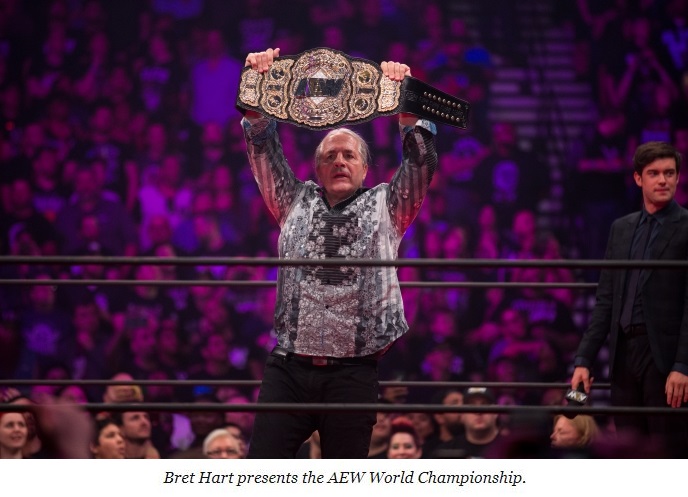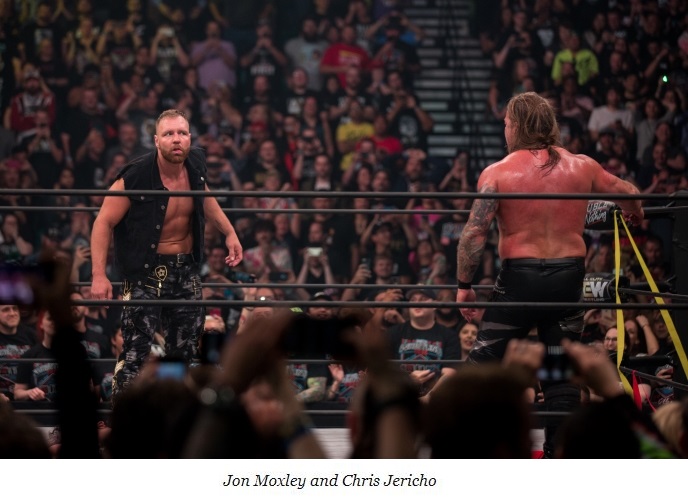All Elite Wrestling’s Fantastic First Show Proves that Wrestling’s Future Lies in Its Past
Photos by Ricky Havlik, courtesy of All Elite Wrestling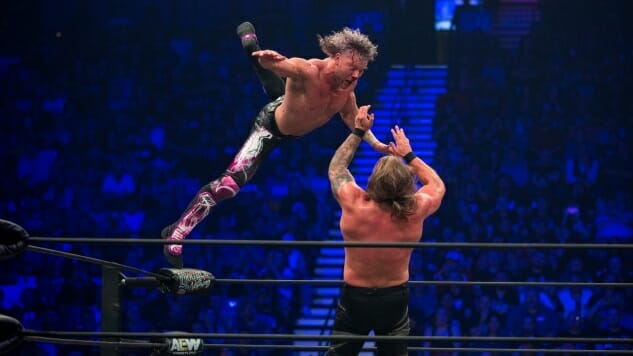
Wrestling isn’t always good at beginnings or endings. When a promotion is running smoothly, it exists as a perpetual motion machine, with angles that lead to storylines that lead to matches that all tangle around each other into a narrative ouroboros of violence and excess. Feuds can have legendary blow off matches and then the same two wrestlers will continue to face each other again at house shows, or square up again on TV within a few months. Unsung enhancement talent will eventually establish themselves as legitimate stars worth pushing, before fading back down the card as their careers wind down. When people compare wrestling to a soap opera, they’re not just talking about the similarly passionate fan bases, the broad acting, or the sense of outlandishness that both share; they’re also talking about the fuzziness of their stories, and how neither ever truly ends until they get cancelled or go out of business.
All Elite Wrestling isn’t interested in maintaining the status quo, though. The new wrestling promotion had its first show ever this past Saturday at the MGM Grand Garden Arena in Las Vegas, and instead of mimicking how the industry-leading WWE produces its events, AEW immediately established itself as a distinct and significant force in professional wrestling. With its upcoming weekly show on TNT still months away, AEW’s Double or Nothing was a true beginning, ground zero for an exciting new company that’s directly challenging WWE’s long domination of the American market, and it’s hard to see how it could’ve gone any better.
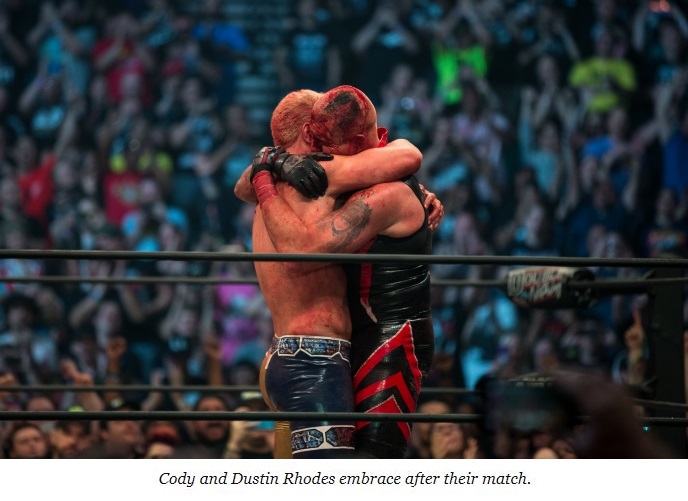
AEW is the brainchild of Tony Khan, an executive with the Jacksonville Jaguars and the Premier League team Fulham F.C., and a group of wrestlers who call themselves the Elite. Kenny Omega, the Young Bucks, and Cody Rhodes took different routes to stardom—the Canadian Omega became a top international star after working in Japan for years, Matt and Nick Jackson of the Young Bucks collectively became of the biggest draws on the American independent scene after years of hard work for a wide range of promotions, and Rhodes (the son of wrestling legend Dusty Rhodes) left WWE of his own accord after his career began to stall in order to prove that he could be a top star in the wrestling business. Along with the relatively young wrestler Hangman Adam Page, they all came together while working for Ring of Honor and New Japan Pro Wrestling, and in the process became the most popular wrestlers in America who don’t work for WWE. Together they form the on-screen and off-screen nucleus for Khan’s new company, along with WWE legend Chris Jericho, the iconic announcer Jim Ross, and Rhodes’s wife Brandi, who serves as the promotion’s Chief Brand Officer.
From the start AEW has positioned itself as the anti-WWE. WWE has squeezed the spontaneity out of wrestling, with wrestlers delivering interviews written by a staff of writers, announcers who are micromanaged through their headsets by backstage observers, and unnatural corporate verbiage replacing natural conversation as often as possible. AEW’s wrestlers will have the freedom to cut their own promos, instead of reciting scripts. In-ring skill and the ability to get over with the audience will matter more than size or appearance when it comes to pushes. Wrestlers will determine the shape of their own matches, instead of matches being guided by producers. Wins and losses will matter, instead of the aimless back-and-forth booking that befalls all but the upper echelon of WWE wrestlers, and that prevents almost any performer from ever looking like a true star. Most importantly, AEW’s stories won’t be subject to the whims of a single 70-something man who long ago lost touch of what his audience wanted and who has always seemed embarrassed to be in the wrestling business. That’s the most crucial difference between AEW and WWE: AEW isn’t run by Vince McMahon, and WWE is.
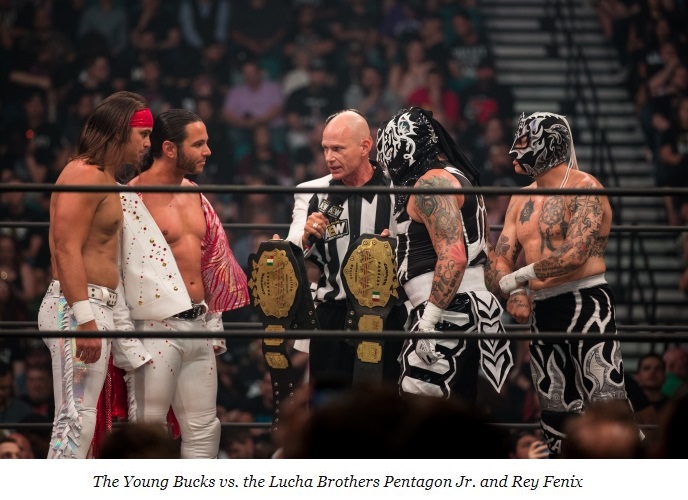
That difference couldn’t be starker after Double or Nothing. AEW’s first show was full of exciting matches that combined dynamic, high-risk wrestling with consistent and coherent storytelling. The three biggest matches—Omega vs. Jericho in a rematch of an infamous New Japan bout, the Young Bucks vs. the brother tag team of Pentagon Jr. and Rey Fenix, and a bloodbath between Rhodes and his older half-brother Dustin Rhodes—were all fantastic, with better action and more fulfilling stories than pretty much every main roster WWE match this year. The undercard delivered as well, with a four-way woman’s match featuring a surprise appearance by Awesome Kong (aka Kia Stevens from Netflix’s GLOW); a six-woman tag match featuring joshi stars from Japan that almost stole the show; and an electric six-man tag between the team of Christopher Daniels, Frankie Kazarian and Scorpio Sky, and three Japanese wrestlers from the China-based group Oriental Wrestling Entertainment, the Strong Hearts team of CIMA, T-Hawk and El Lindaman.
-

-

-

-

-

-

-

-

-

-

-

-

-

-

-

-

-

-

-

-

-

-

-

-

-

-

-

-

-

-

-

-

-

-

-

-

-

-

-

-


